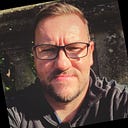Ramsau & Berchtesgaden, Germany
The morning clouds were burning off as we drove east from Lenggries toward the far southeast corner of Bavaria. Stretches of the Autobahn were free of speed limits so we cruised in our Volkswagen (that was fun).
The Alps rose on our right but we soon turned south and the mountains filled our view ahead. The road narrowed and twisted as we followed the river Schneizlreuth. This was the famous Alpenstrasse, the Alpine road, and each town we passed was more scenic than the last
We pulled off at Weissbach An Der Alpenstrasse to get a better look at the blazingly white village church set high above a field dotted with bright yellow dandelions (they grow like weeds over here ha).
Soon we arrived at Ramsau, the impossibly picturesque mountain valley town right before you reach Berchtesgaden. The cold river frothed over rocks as we crossed a weathered bridge to view the striking Parish Church of St. Sebastian set against a backdrop of snow-capped Alpine peaks.
This was the best weather I’d ever experienced in my visits to Ramsau. Previously, the mountains were always obscured by clouds but today, the sun was out and we enjoyed views worthy of postcards.
We pushed open the heavy doors to the church and waited as our eyes adjusted to the filtered light. The pews were worn from a thousand Sundays. Metal tags still reserved seats for parishioners from the 1800s.
St. Sebastian provided a beautiful resting place with its small cemetery set in the mountain valley. Its walls were lined with memorials for fallen soldiers including a family that lost sets of brothers in both world wars.
If you leaned in close, you could study the faces. Text in old German fonts listed dates and locations they fell: first in the Caucasus in October 1942 as the German army drove toward Stalingrad, then in a homeland hospital in June of 1943 and finally, in February 1944, in Cherkassy in central Ukraine as the Red Army pushed back.
Along an opposite wall was a marker for a father who died in World War I, prominent in his spiked Pickelhaube helmet. On either side were his two sons in their Wehrmacht uniforms. They died less than 20 years later in World War II. All three fell in France.
The memorials regularly featured photos of the soldiers which communicated the human costs of war more than any text ever could.
We followed the river a bit further and were soon in Berchtesgaden. Again, I’d never seen the dramatic mountain peaks surrounding the town until today.
We enjoyed lunch and slowly explored the old town complete with the requisite late-afternoon ice cream cone. Berchtesgaden was full of history.
We drove into the mountains surrounding town, stopping several times to enjoy the view. A passing rainstorm quickly gave way to blue skies again.
We passed Obersalzberg where Hitler had his Berghof. Only a bit of foundation remained today but the Hotel zum Türken just above on the hill was there at the time. It had an SS detachment stationed there, guarding Hitler next door. The building was severely damaged in the bombing raid of April 25, 1945.
Back down in Berchtesgaden, we drove past the Hofbrauhaus and promptly parked. Although it was a bit early for dinner, we joined a group of men on the interior terrace and ordered beers.
It was interesting to explore the old beer hall inside before it got crowded. I came across a couple of wooden boxes holding a collection of two-man saws. Were these tools for some form of German drinking game?
Ramsau and Berchtesgaden are always fascinating to explore but the sunny weather for our visit made it even more memorable.
……….
Thanks for coming along on the trip. If you have questions or suggestions, tweet @JasonRMatheson. Missed an entry? Click here.
